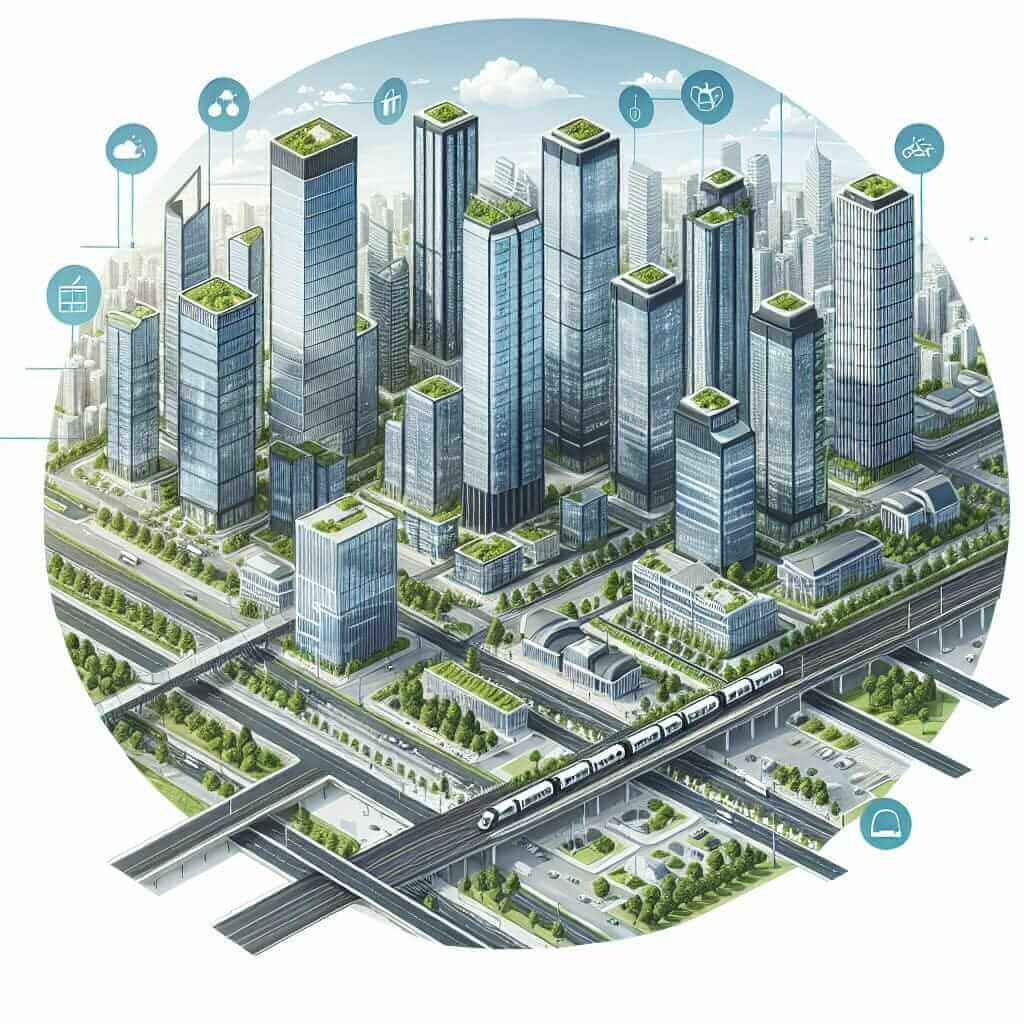The interplay between urban infrastructure and climate change is a pressing global issue, frequently appearing in IELTS Writing Task 2. This topic explores the impact of urbanization on the environment and the measures needed to create sustainable cities. Its prevalence in recent IELTS exams suggests it will likely remain a key theme for future tests.
This article will analyze a relevant IELTS essay question, provide a high-scoring sample answer, and offer valuable vocabulary and writing tips to help you excel in your IELTS exam.
Sample IELTS Essay Question
Below is an example of an IELTS Writing Task 2 question focused on urban infrastructure and climate change:
Some people believe that the best way to address environmental problems in urban areas is to increase the size of cities. Others argue that we need to limit the growth of cities and encourage people to live in rural areas.Discuss both views and give your own opinion.
Essay Analysis
This question requires you to discuss two contrasting viewpoints:
- View 1: Expanding cities can solve environmental issues.
- View 2: Limiting urban growth and promoting rural living is preferable.
You need to present balanced arguments for both sides and then clearly state your own opinion, supporting it with relevant examples and analysis.
Model Essay
Overpopulation and the subsequent expansion of urban areas have placed a considerable strain on the environment. While some advocate for increasing the size of cities as a solution, others believe that limiting urban growth and encouraging migration to rural areas is more effective. This essay will explore both perspectives before presenting my own view.
Proponents of urban expansion argue that larger cities can accommodate more green initiatives and sustainable technologies. For instance, investing in public transportation networks and promoting cycling infrastructure can significantly reduce carbon emissions. Additionally, the concentration of resources in urban centers facilitates the implementation of waste management and renewable energy solutions, leading to a lower environmental footprint overall.
Conversely, those who support limiting urban growth posit that it would alleviate the strain on existing infrastructure and resources. They argue that encouraging people to live in rural areas would promote a more balanced population distribution, reducing pressure on urban ecosystems. This, in turn, could lead to the preservation of natural habitats and a decrease in pollution levels.
In my opinion, while both arguments have merit, limiting urban sprawl while simultaneously implementing sustainable practices within existing cities is the most viable approach. Encouraging compact city designs, investing in green buildings, and promoting urban farming are just some ways to create more environmentally friendly urban environments. By focusing on sustainability within existing urban boundaries, we can mitigate the negative environmental impacts of urbanization without resorting to drastic measures like limiting city growth.
(279 words)

Writing Notes
- Vocabulary: Employ a wide range of vocabulary related to urban planning, environmental issues, and sustainability.
- Sentence Structure: Use a variety of sentence structures, including complex sentences and transitions, to demonstrate fluency and coherence.
- Cohesion: Use cohesive devices such as linking words and pronouns to connect ideas and paragraphs smoothly.
- Grammar: Ensure accurate grammar usage, paying attention to subject-verb agreement, tenses, and articles.
Useful Vocabulary
Here are some useful words and phrases related to urban infrastructure and climate change:
- Urban Sprawl (n.): The uncontrolled expansion of urban areas.
- Sustainable Development (n.): Development that meets present needs without compromising the ability of future generations to meet their own needs.
- Renewable Energy (n.): Energy from sources that are naturally replenished, such as solar and wind power.
- Carbon Footprint (n.): The amount of carbon dioxide released into the atmosphere as a result of the activities of a particular individual, organization, or community.
- Green Infrastructure (n.): A network of natural and semi-natural areas designed to deliver a wide range of ecosystem services.
- Urban Heat Island Effect (n.): The phenomenon where urban areas are significantly warmer than surrounding rural areas due to human activities.
- Climate Resilience (n.): The ability of a city or region to withstand and recover from the impacts of climate change.
- Mitigation (n.): Actions taken to reduce or prevent the severity of something, especially climate change.
- Adaptation (n.): Adjustments in ecological, social, or economic systems in response to actual or expected climatic stimuli and their effects.
- Decentralization (n.): The process of redistributing or dispersing functions, powers, people or things away from a central location or authority.
Conclusion
Understanding the relationship between urban infrastructure and climate change is crucial for IELTS Writing Task 2. By studying model essays, expanding your vocabulary, and practicing your writing skills, you can confidently tackle any essay question on this topic. Remember to present well-structured arguments, support your claims with relevant examples, and maintain a clear and concise writing style. For more insights on related topics, explore the links below: